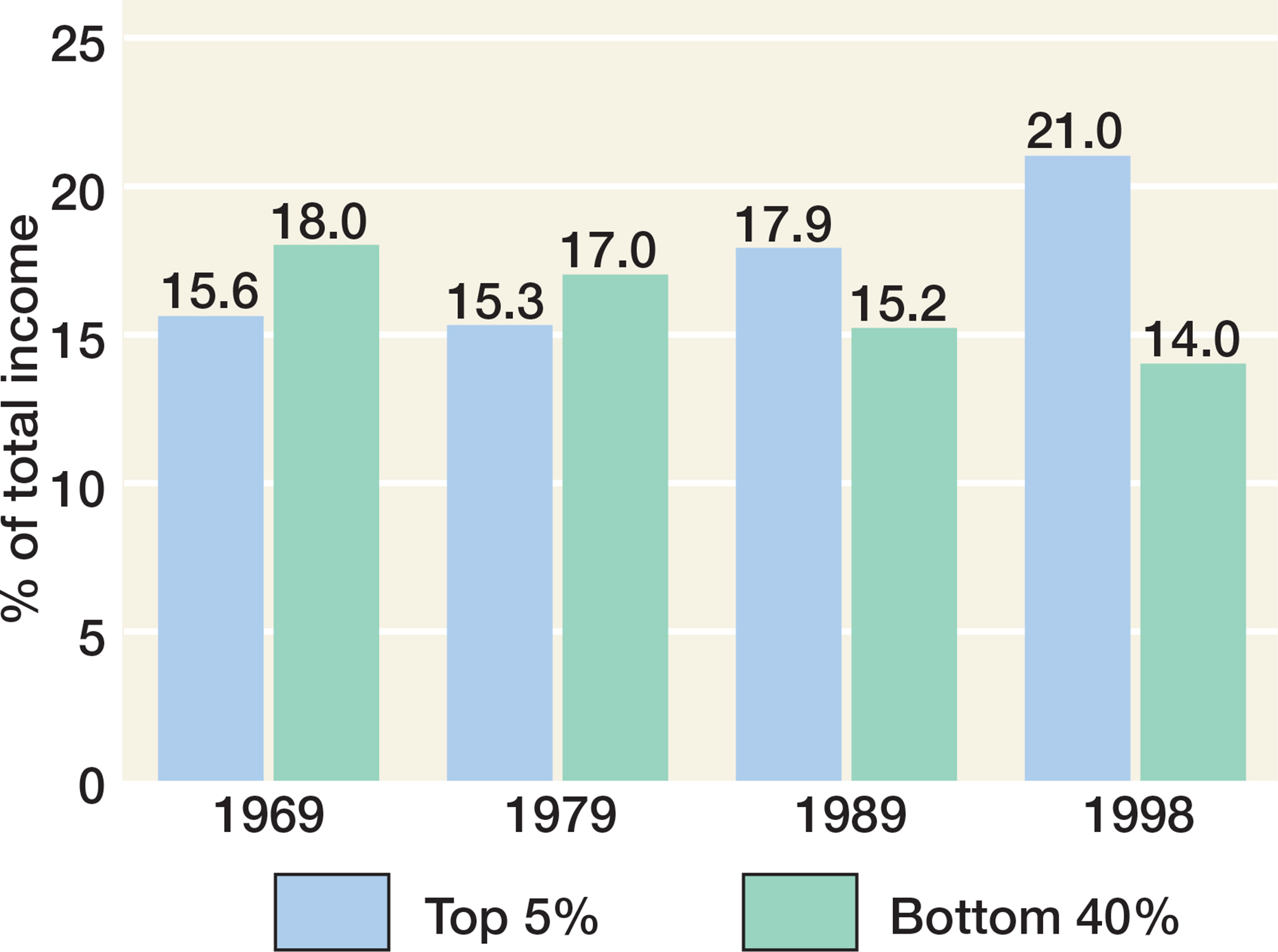The American Promise:
Printed Page 899
The American Promise Value
Edition: Printed Page 833
The Booming Economy of the 1990s
Clinton’s ability to weather impeachment owed much to the prosperous economy, which in 1991 began a period of tremendous expansion. During the 1990s, the gross domestic product grew by more than one-

Clinton’s policies contributed to the boom. He made deficit reduction a priority, and in exchange the Federal Reserve Board and bond market traders encouraged economic expansion by lowering interest rates. Businesses also prospered because they had lowered their costs through corporate restructuring and employee layoffs. Economic problems in Europe and Asia helped American firms become more competitive in the international market. And the computer revolution and the application of information technology boosted productivity.
People at all income levels benefited from the economic boom, but income inequality, rising since the 1970s, endured (Figure 31.1). The growing use of computer technology increased demand for highly skilled workers, while the movement of manufacturing jobs abroad diminished opportunities and wages for the less skilled. Moreover, deregulation and the continuing decline of unions hurt lower-
Although more minorities than ever attained middle-
REVIEW: How did President Clinton seek a middle ground in American politics?